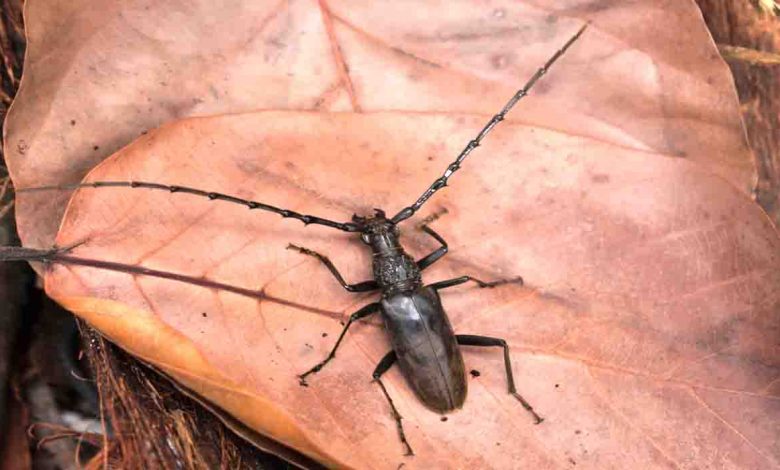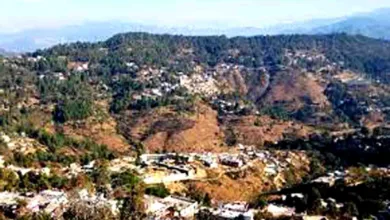Restoring the environment with non-chemical methods to manage pests

Sunday, 13 June 2021 | Ranjeet Singh
GUEST COLUMN
 Ranjeet Singh
Ranjeet Singh
Environment includes water, air and land, and their inter-relationships with human beings, other living creatures, plants and microorganisms. The list of issues surrounding our environment go on, but there are major ones that affect the majority of them- global warming and climate change, water pollution and ocean acidification, loss of biodiversity, plastic pollution, deforestation and chemical pollution. Everything available in the environment which can be used to satisfy our needs, provided, it is technologically accessible, economically feasible and culturally acceptable can be termed as a resource. The process of transformation of things available in our environment involves an interactive relationship between nature, technology, institutions and humans to accelerate economic development. Environmental restoration is defined as actions to re-instate ecological processes, which accelerate recovery of environment, ecological functioning and biodiversity levels. It includes simply protecting vegetation or more active interventions to accelerate natural regeneration, as well as tree plantingand use of non chemicals methods in pest management.
Insect pests, diseases and weeds are the major constraints limiting productivity. It is estimated that herbivorous insects eat about 26 per cent of the potential food production. In India, pesticide use has been increasing at an annual rate of 2.5 per cent in early 1970 and 8.1 per cent from 2014 to 2019. About 96,000 tonnes of technical grade pesticides are currently produced in the country, of which two-thirds are used in agriculture. Maintaining higher yields also led to a dramatic increase in pesticide use, from 5,700 tonnes in 1960 to 61,702 tonnes in 2019-20. Although per hectare pesticide use in India is about 290 grammes, pesticides are used indiscriminately and maximum consumption of pesticides is in Punjab (700g/hec.). Out of 292 pesticides registered in the country, 85 technical grade pesticides are manufactured in India. Indian agrochemicals market has close to 80 players in the organised sector and more than 500 players in the unorganised sector. The pesticide demand is close to 69,211 MT per annum. India’s pesticide industry is the largest in Asia and the twelfth largest in the world with annual market of Rs 197 billion in 2018 and further projected to reach a value of Rs 316 billion by 2024. At the same time, there is a rising public concern about the potentially adverse effect of chemical pesticides on human health, environment and biodiversity.
Many organisms use chemicals for communication with other organisms and their surrounding environment. Semiochemicals are chemicals used for communication between organisms and sub-divided into kairomones and pheromones according to whether the individuals involved belong to different or same species. Semiochemicals are well-developed in the insect world, they are highly biologically active and effective at low concentration and they are non toxic to plants and animals.
A chemical substance emitted by one species and especially plant that has an adaptive benefit to another species especially insects is called kairomones. More than 75 kairomones have been identified for control of insect pests all over the world. In 1930, Beeson observed that adults of Hoplocerambyx spinicornis, Sal heartwood borer attracted from at least one kilometer away by volatile chemicals emanating from newly felled trees. Based on this observation, he developed Trap-Tree Method for controlling the attack of Sal heartwood borer in Sal forest. The ideal Trap-Tree is one of 60- 90 cm girth, with 2-3 m long logs and the bark near the cut ends beaten up to provide shelter for beetles.
Pheromones are a mixture of chemicals released by an individual into the environment for specific reaction and these chemicals act between individual of the same species. These are also called insect behaviour modifying chemicals. The pheromones of more than 20 insect pests have been fully optimised in India.
Botanicals disrupt the fundamental or physiological or biochemical process of insects. As many as 2,171 plant species have been reported to possess pest control properties. Tree resistance to insects is an ideal method of controlling forest insect pests, at no extra cost in material or labour and with no danger from chemicals residue. Teak clones, TNT-11, TNT-6 and KLK-2 are more resistance to teak defoliator, Hyblaea puera. Poplar clones is resistance to Poplar defoliator, Clostera cupreata.
About 60 per cent of the natural control of insect pests is by the enemies of insect pests such as parasitoids, predators and insect pathogens. Carabid beetle, Calosoma beesoni, occurs in deodar forest is an important predator of Deodar defoliator, Ectropis deodarae Prout. Egg parasitoids, Trichogramma spp. is an important and efficient biological control agent of Teak defoliator.
Using such non-chemical means of pest management can go a long way in restoring the environment while also being viable from other aspects.
(The author is officer in-charge of Entomology Discipline at Forest Research Institute, Dehradun)






